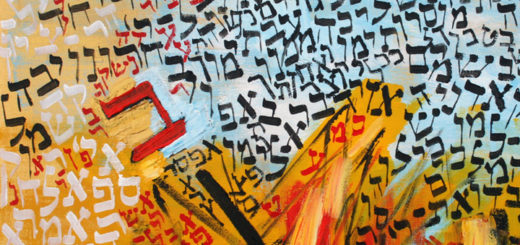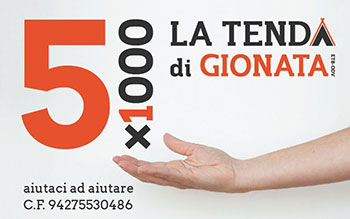I, the Romanina. History of a transition in Italy of the 60s
Article by Marco Luceri published on the Corriere Fiorentino website on 11 November 2015
There was a time when those who was born in a body that did not feel like had two paths to take, the sidewalk or the stage. Romina Cecconi walked them both. Burning his life and becoming a myth. It is to her, born Romano Cecconi - for all Romanina - that the Florence Queer Festival dedicates the opening with a documentary film that traces her story, "The Woman Pipistrello" by Francesco Belais and Matteo Tortora, present in the room with her.
 The film comes after a cult autobiography ("Me, the Romanina", released by Vallecchi in 1976) and a theatrical show written ten years ago by Luca Scarlini and played by Anna Meacci. The seductive, provocative Romina, born in Lucca in July of the war of 1941 and reborn in the summer of 1972, after an operation in Switzerland, was among the first in Italy to turn to the surgeon to obtain the identity that he has always felt more, paying his desire for freedom with violence, processes, prison and even confinement for three years in Volturino, a village, a village in the province of Foggia. Now he is a talkative lady who lives in Bologna between ninnoli and memories, who when he talks about his life does it with the good humor of those who have seen all the colors and knows that the existence after all is only a casual succession of pain and comedy.
The film comes after a cult autobiography ("Me, the Romanina", released by Vallecchi in 1976) and a theatrical show written ten years ago by Luca Scarlini and played by Anna Meacci. The seductive, provocative Romina, born in Lucca in July of the war of 1941 and reborn in the summer of 1972, after an operation in Switzerland, was among the first in Italy to turn to the surgeon to obtain the identity that he has always felt more, paying his desire for freedom with violence, processes, prison and even confinement for three years in Volturino, a village, a village in the province of Foggia. Now he is a talkative lady who lives in Bologna between ninnoli and memories, who when he talks about his life does it with the good humor of those who have seen all the colors and knows that the existence after all is only a casual succession of pain and comedy.
"I came to Florence with my mom who was a little more than a little girl - he says - we ran away from a black misery. I never met my true father, what he adopted there was a good man, but often he drunk and became violent. After his death we arrived in a city that we did not know, but that seemed beautiful.
We lived in an apartment in via Senese and the mother went to work at the "Da Nello" Trattoria in Borgo Tegolaio. At 15-16 I went to Bottega in San Frediano because I learned to do the golden frames and I started to dress with colorful clothes and to dash in my very narrow jeans, so in a short time I became the Romanina for everyone. They also dedicated a song to me: "Let the beautiful Romanina pass ...".
When I passed from Piazza Santo Spirito the usual helmets often threw me into the fountain tank, but many turned to look at me! With my friend Silvia we started attending the farmhouses, the meeting for all gays was the Capannina. And the troubles began there, because every day there was the goodness that ranled, and so I began to spend more and more time on the police headquarters. When it was fine they made you fines. How could I pay them?".
And it is here, in the early sixties, that the myth of Romanina was born, first on the stage, then on the streets and premises of the night and Underground Florence. "They led me to the Circus Scratch, who in the evening went around Campo di Mars, Piazza Tasso and Piazza Garibaldi. I invented my number of mine: dressed in feathers I sang a song full of double senses, showing up my B side, then I danced the Let's Twist Again by Peppino Di Capri and I was imitating Milva, wearing a nice fire -red wig.
The first evening from the square launched me a fennel, which I immediately started to munch on: “But are you crazy to throw the fennel away? I'm so boni! " I exclaimed and down the applause. It was a triumphant debut. I had become a star, so much so that when I started making life up and down via Tornabuoni my clientele was made up of doctors, lawyers, architects. Silvia and I entered the beautiful world of Florence from the main door.
The rich invited us to their penthouses with sight. Once I remember that in a cellar near Santo Spirito, a tavern frequented by the large families of the city where the stripteases were made, there was a redeaned of the Buoncostume and we all ended up in the mirror magazine. It was my first cover".
There are many anecdotes about those years: "There was no party, night club or worldly appointment in which Silvia and I was not the stars. We made friends with the painter Scatizzi, a great enthusiast of the work that made us sing the arias and helped us make up. Once I left his house that I looked like Alex of Orange Mechanics. Another time they caught me at the exit of the River Club with those who had time after being a gang of dangerous thieves, to whom I had only asked for a passage by car.
Every time something happened the next day I found myself on the pages of the nation, with titles shouted at the scandal. They did it to sell more copies, of course".
Devil of a Romanina, who unleashed it - it is appropriate to say - even in November 1966 with the flooded city: "I lived in Piazza Santo Stefano, near the Arno, when the river broke the banks. From the shops in via Por Santa Maria all God arrived, including a splendid crocodile leather bag that I managed to grab.
It was my luck: in the evening I went to the station where there were many volunteers to be consolated and I did a null of 800 thousand lire in a few days. I could have bought myself a house. I thought I kept that money aside for the operation. Instead I spent almost everything in a boutique in via de 'Pecori to buy me Visone and Chignon and go to the reopening of the Verdi theater, despite the curfew set me by Giuseppe Vigna. That evening I had no rivals. They said that thanks to me Florence was experiencing his second Renaissance".
From the golden and crazy city of those years, Romanina then moved on to the international jet-set, to friendship with the daughters of Chaplin, to the flirts consumed and missed (such as the one with Vittorio Emanuele of Savoy), passing through the confinement, up to the political battles to see their rights recognized. Among the most beautiful memories, the one lived in Lausanne, the day after the operation: “I didn't have enough money to pay it. So I phoned mom. The next day I saw her get to the hospital. He had 500 thousand lire, the savings of a lifetime. He knew he had my life restores me for a second time. We looked at each other and we started crying, like two grits".






